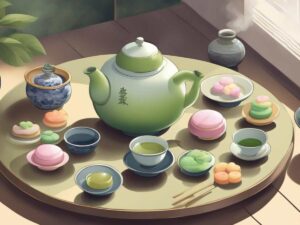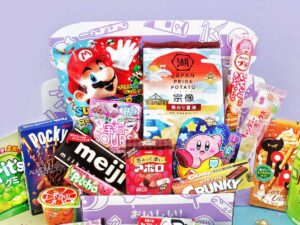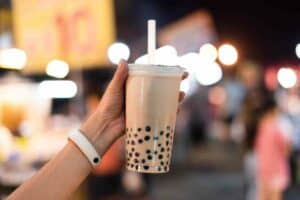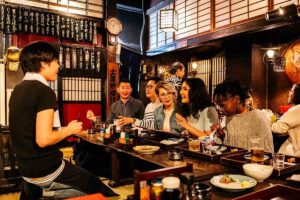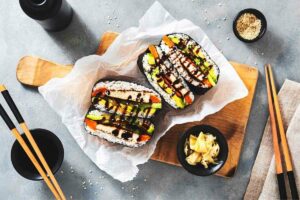While traveling in Japan, you may find yourself in the Kansai, also called Kinki region, including Kyoto, Osaka, Nara and Kobe.
So which Japanese foods, specific to the Kansai area, should you not miss on a trip? Where can you also find these foods online, or overseas?
Table of Contents
Before We Start
In Japan, each region has distinct food differences, with certain typical dishes, but also specific ingredients used to create a standard dish.
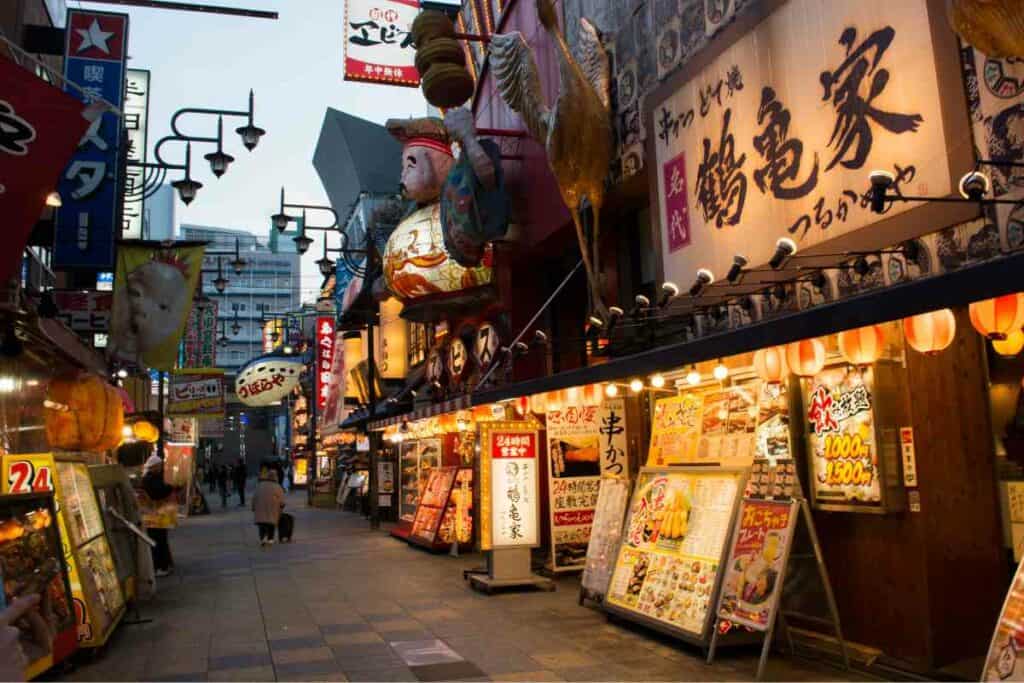
For example, the stock used to brew a noodle dish may have a different taste or texture than in the Kanto area. Kansai mostly uses “kombu dashi” whereas Kanto chefs would use ” katsuo” based stock.
There are also differences in the type of miso paste used to prepare dishes.
In Kyoto, for example, the sweet “saikyo miso ” is the basic ingredient, with a peculiar sweetness due to lower sodium content and a light beige colour, dating back to city’s imperial capital era.
Top Osaka Foods
A Japanese saying “食い倒れ” (eat till you drop) is often used to describe Osaka, as the city always had plenty of supplies, from seafood to beef and local vegetables, since the Edo era.
Its inhabitants love their food and it is reflected in the numerous street food stands, but also the wide variety of restaurants found in the city.
Booking.com1. Takoyaki
Takoyaki is an Osaka street-food specialty, slghtly different than okonomiyaki, another Osaka creation, and nowadays widely in Japan and abroad.
The basic ingredient for Takoyaki is “Tako” たこ”, literally squid pieces.
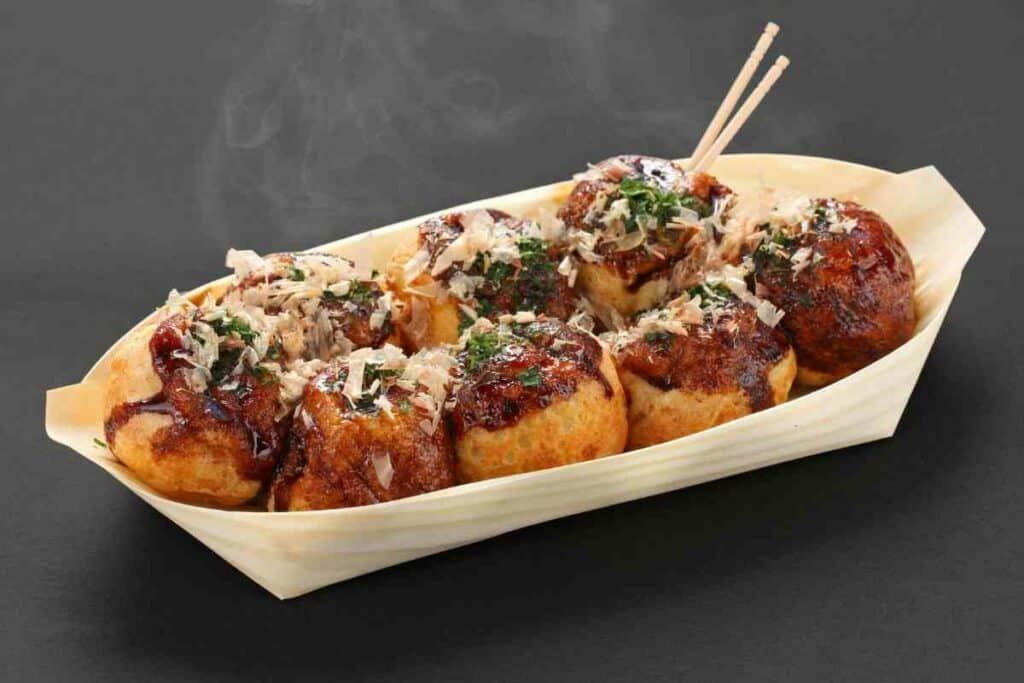
The round pieces of batter, filled with octopus bits, are cooked on special iron molds (these can be bought easily in the various kitchen tools shops around Shinsaibashi in Osaka.), and moved by chopsticks during cooking, in most of Osaka’s popular areas, such as Dotombori.
Depending on the customer’s taste, they can be served with a Worcester-style sauce, mayonnaise, seaweed powder, and katsuo boshi (you know, the pinkish moving fish flakes…)
2. Okonomiyaki
Okonomiyaki originating from Osaka, also during the Edo period, it is still served in Kansai as a batter mix, with every ingredient you can think of cabbage, shrimp, pork, octopus, and cheese.
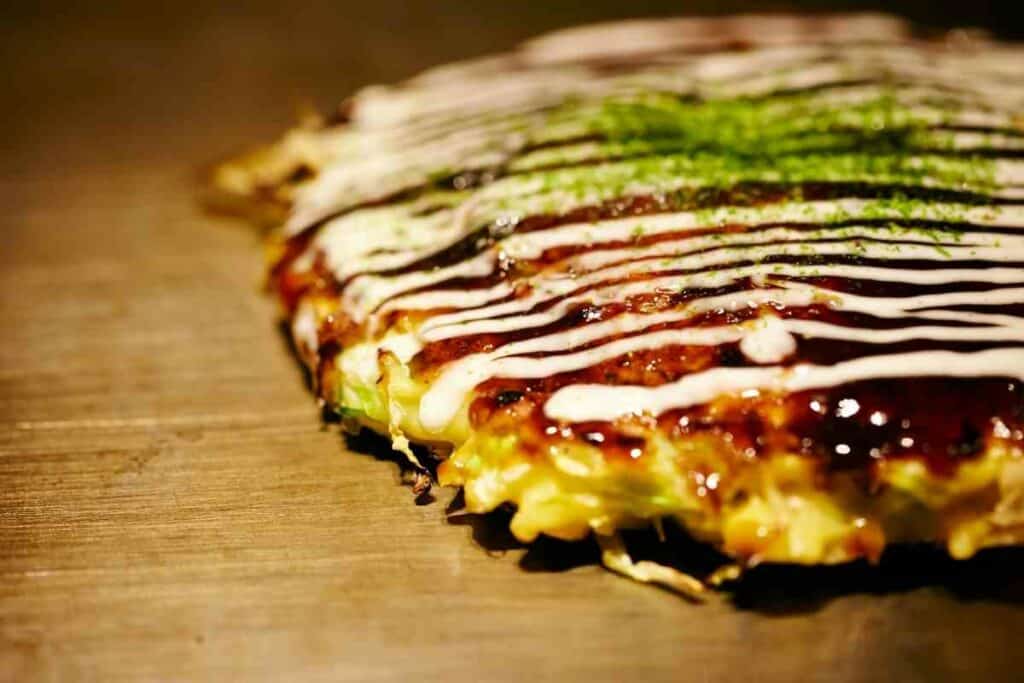
Once cooked, the sauce, mayonnaise, and katsuo boshi.
It certainly has a different look and taste than the Okonomiyaki found in Hiroshima, for example.
Strict vegetarians may find this option a bit trickier than kushikatsu, for example, as both fish flakes and fish broth are used in the recipe.
Booking.com3. Kushikatsu
This is another dish born in Osaka, according to the legend, in 1929. Derived from the meat skewers, they come in a variety of sticks, from lotus roots to ginger slices.
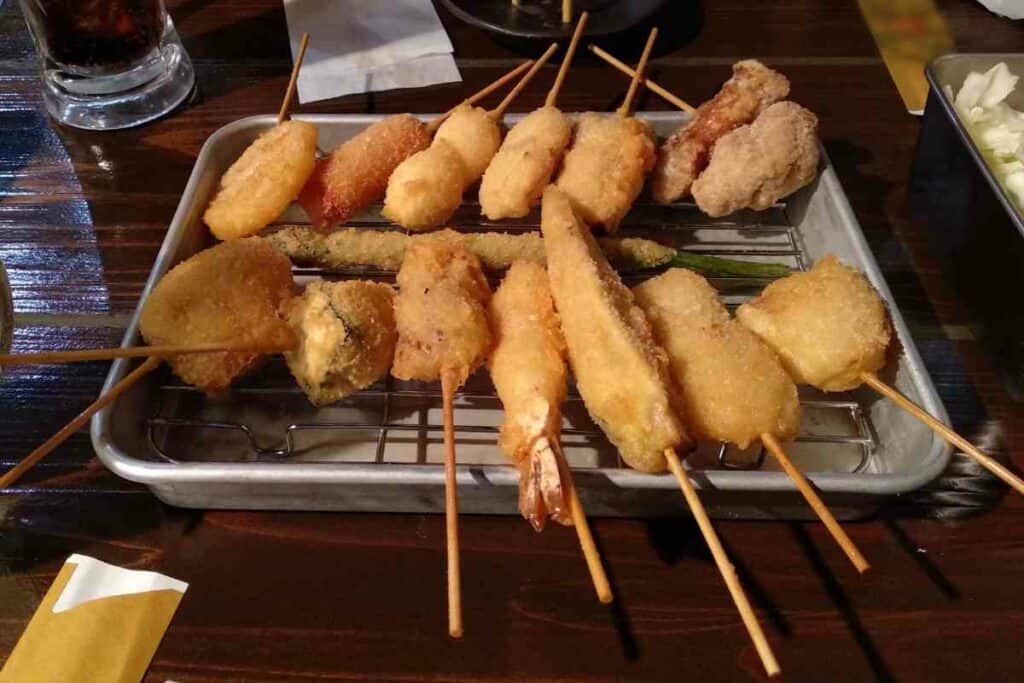
It could also make a good option as Japanese food for vegetarians, as flour based meal, with various vegetables, including peppers, shitake mushrooms, pumpkin or aubergines.
Top Kyoto Foods
4. Kaiseki Ryori, one of the five Kyo-Ryori
Kaiseki Ryori refers to a full set of dishes, in a banquet lay out, with origins dating back to the Edo period (1603 to 1867).
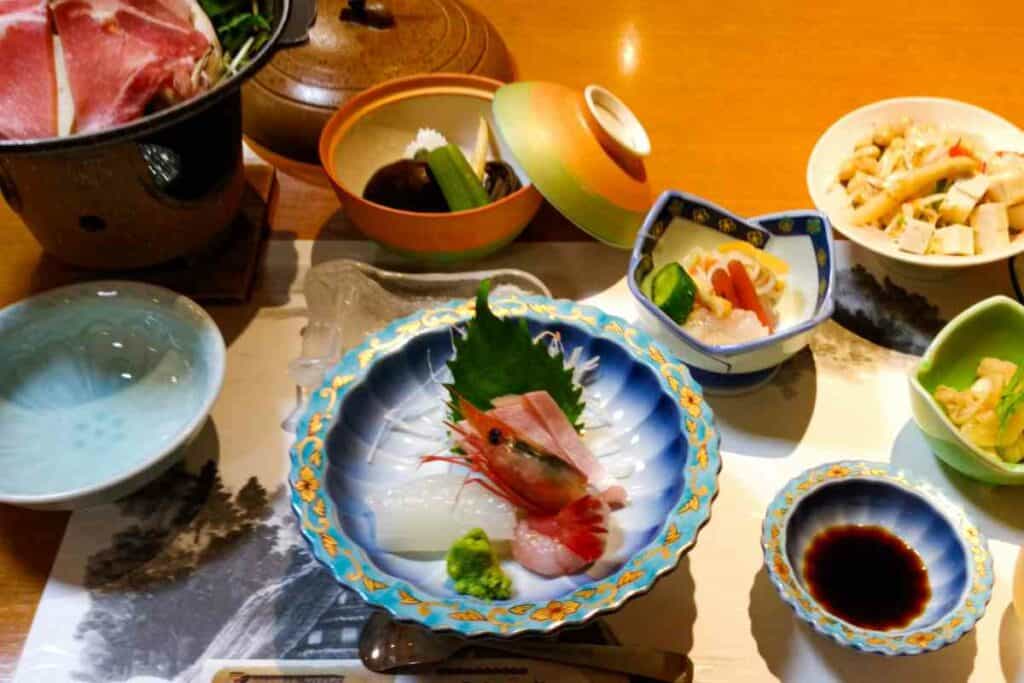
Based on seasonal ingredients, it emphasises the rhythm of the seasons, in Kyoto, with matching fine ceramics and tray decor.
The elements composing the meal are finely carved with the point of the knives, in a totally separate manner as in Kanto.
Kaiseki Ryori is perhaps the most acquired taste for a first time visitor to Kyoto, although it is a must try, if you visit the old capital.
5. Green tea Ice Cream
The actual origin of the Green tea ice cream is unknown, but there are some hints that it was already on the menu during the Edo period in Kyoto.
The town of Uji, located near Kyoto, is the main traditional centre for green tea production and traditional teahouses.
Uji, as well as its green tea production and authentic tea products, is also home to many ancient tea houses, serving green tea shaved ice (Uji Kintoki) but also green tea ice cream parfaits, or jelly.
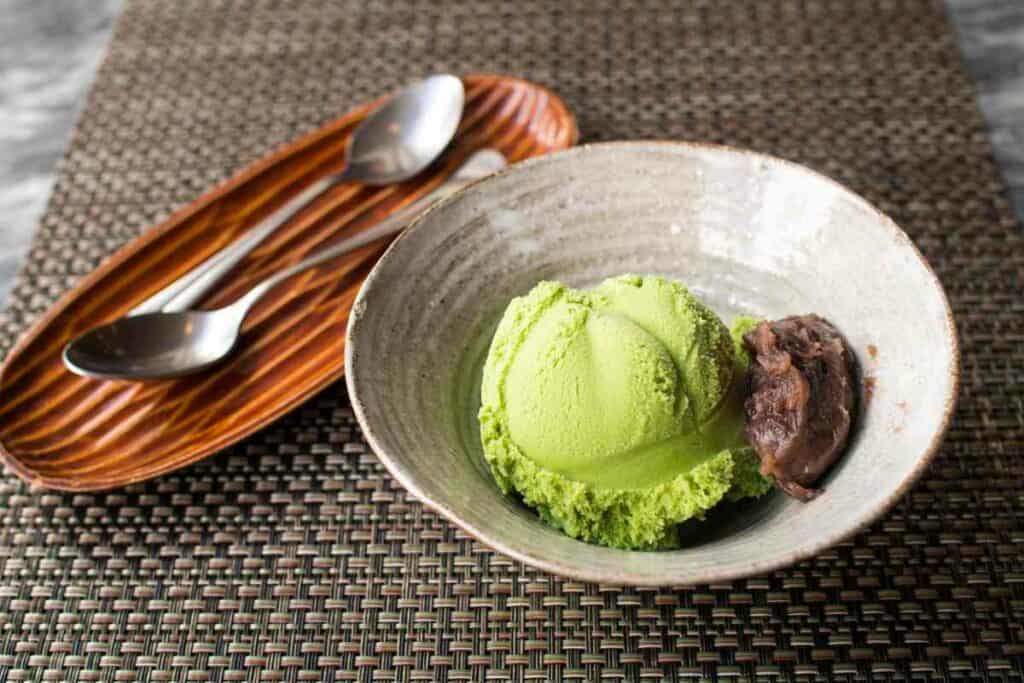
Most creations do not use artificial colouring, or flavouring, and the natural strong flavour of the green tea powder (matcha) is fully appreciated.
The actual technical development of macha Ice Cream can be traced to 1958, when a tea manufacturer from Wakamaya developed a technique to mix macha green tea, with high fat ice cream.
It became a favorite in the region, but in Kyoto, Nara or Osaka as well. If you are planning on visiting Kyoto, then a stop at the Gion Tsujiri specialty shop is a must!
You can also find nowadays Macha ice cream powder, letting you reconstitute the original taste in your home. This is a typical Japanese afternoon snack for hot summer days!
6. Unagi (eel)
Kyoto has some restaurants serving exclusively freshwater eel dishes or “unagi”, in Japanese.
Some of these are located in the prime spot, with verandas overlooking the Kamogawa River, near the famous Pontocho alley.
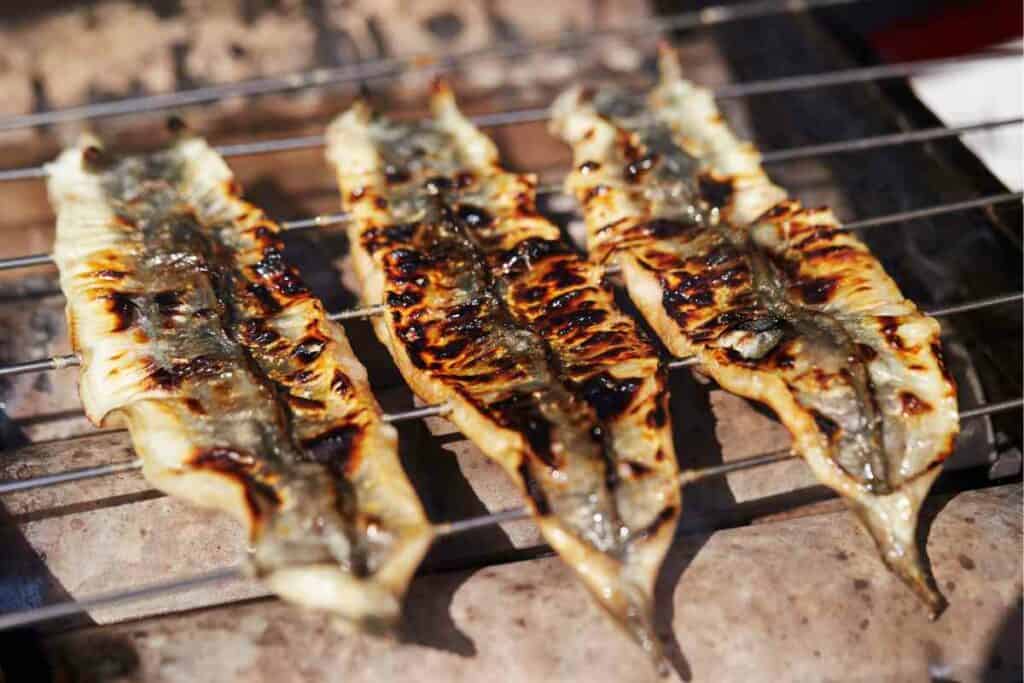
Served in a lacquered box, with plenty of Japanese rice, the eel filets are cooked, firstly charcoal grilled and topped with a soy-based sauce, in a typical Kyoto style.
It is said that eating eel dishes in the summer can help copping with the Japanese summer heat, so if you are there in July or August, do not hesitate to try.
Some specialities restaurants can also be found in Arashiyama, the picturesque river village, near Kyoto.
Top Kobe Foods
7. Wagyu Beef
Kobe beef are all categorized as wagyu beef, based on their origin. All cows born and raised in the Tajima prefecture, in Kobe, with specific Tajima Gyu genetics are labelled as such.
The number of animals raised to these standards totals 5000 heads. Kobe and Tajima cows are physically small animals, and they produce a refined taste, rather than a full fatty appearance.
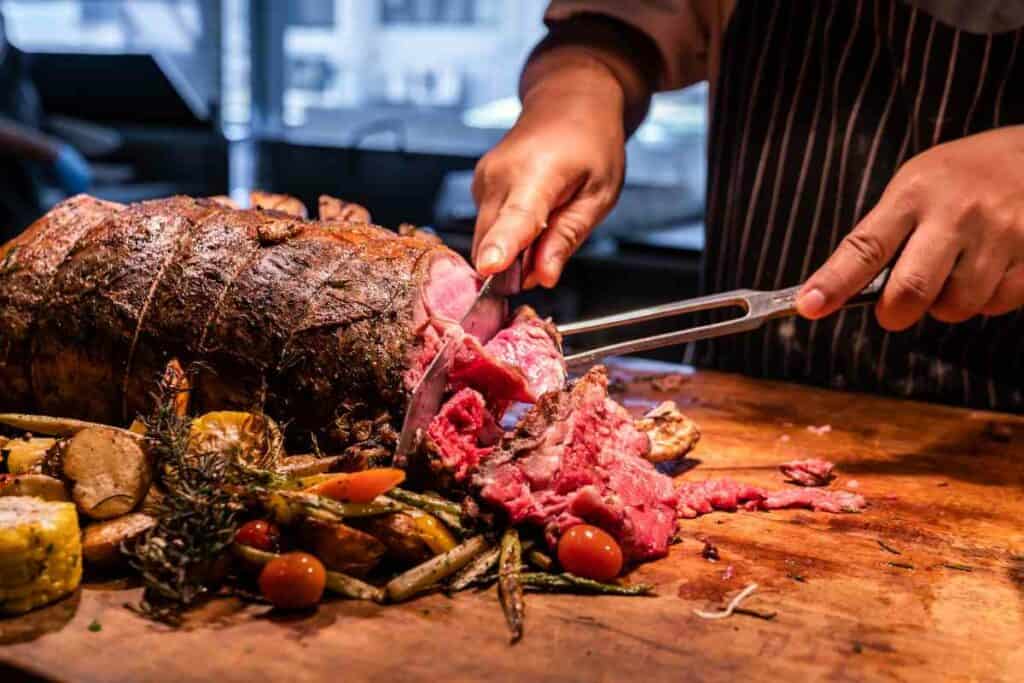
Among Japanese foods, Kobe beef is one of the leaders on all internationally renowned tables. With its various levels of fat marbling, Kobe beef is often sliced in thin pieces and used in the shabu shabu dish.
While in Kobe, you can visit some of the historical beef restaurants, such as Mouriya, which opened 140 years ago. This well-known restaurant also has a branch in the Gion area, in Kyoto, and owns its own pasture, supplying the meat to its shops.
Top Nara Foods
8. Narazuke: the pickles from Nara
Let’s not forget that Nara was the first capital of Japan, with its own aristocratic gastronomic features, still recognizable in today’s dishes.
Perhaps these dishes are less well known overseas, but one the most impressive food items from Nara is the pickle called “Narazuke”.
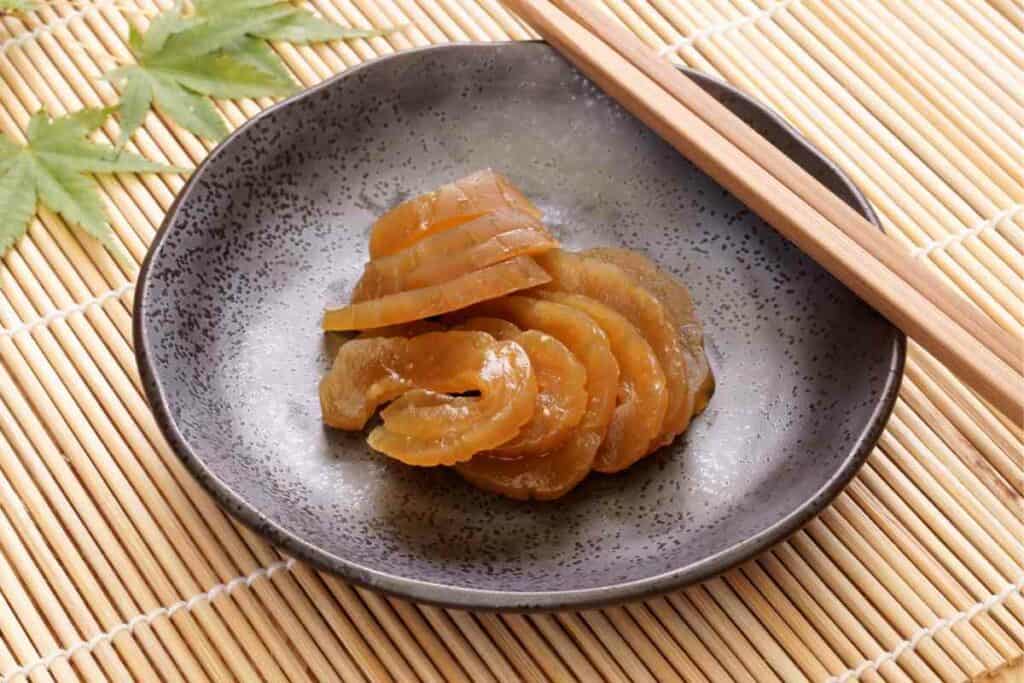
It is a really well balanced combination of sweet and sour tastes, probably mostly an acquired taste as well.
From cucumber, watermelon, ginger etc. the process of pickling in sake lees and mirin vinegar can take up from 2 to 4 years.
Other vegetables used in this pickle include Daikon radish, plum, or melon. The salt is practically eliminated in this pickle process, through the long months of preparation.
9. Kaki no hazushi, or persimmon leaf narezushi
This specific delicacy originates in the Nara and Wakayama prefectures. It consists of a fermented type of sushi (“narezushi”) wrapped in a persimmon leaf.
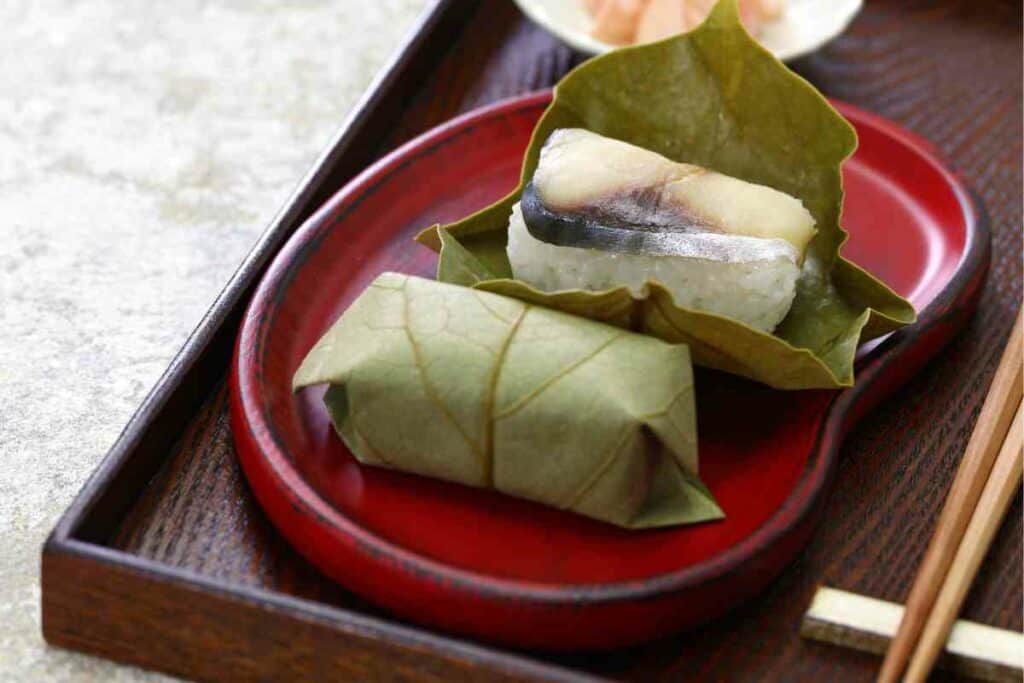
The most common fish used in this dish is the mackerel (“saba” in Japanese), however other types of fish are sometimes also used.
Taste, overall, is pleasant, even from a non-Japanese visitor, and maybe easier to appreciate than other local cuisine.
There are usually boxes of Kaki no hazushi available as bento box or gift boxes in the main train stations, such as JR Nara, or JR Kyoto.
Top Himeji Food
10. Himeji Oden
Legends tell that the Himeji Oden derived from a regular hot pot (“nabemono”) when ginger soy sauce was sprinkled by mistake, during the Showa era, in the 1920s.
In Kansai, and the Hyogo prefecture, Himeji is one of the soy sauce and ginger production areas.
However, it is not until 2006 that the Himeji tourism promotion board awarded its official name ” Himeji Oden” to this specific recipe.
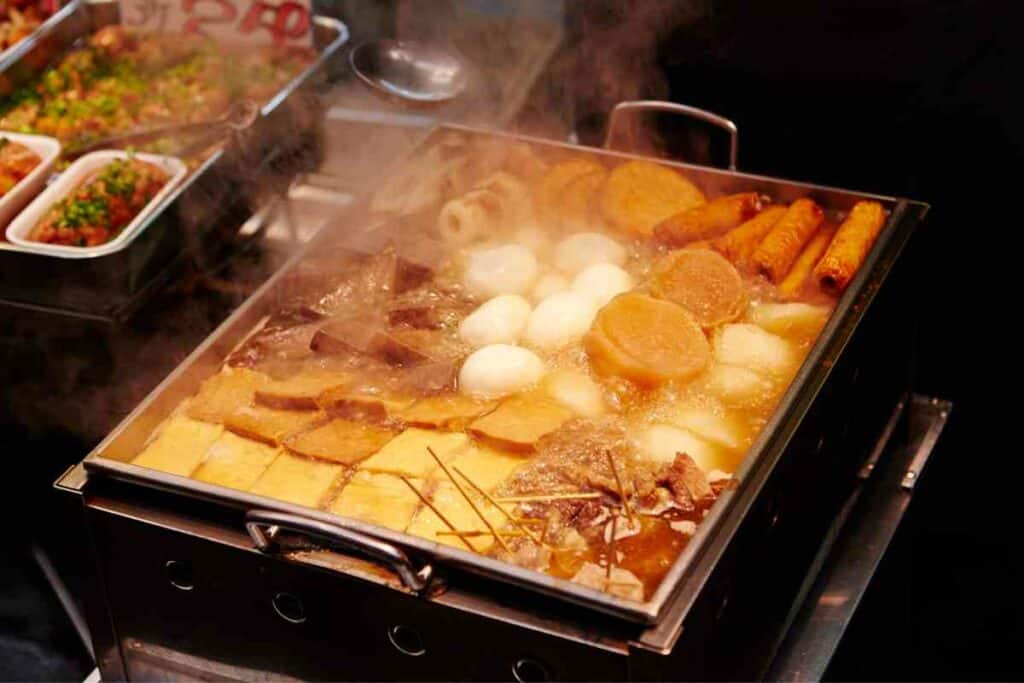
The hotpot Oden itself is a mix of vegetables, konjac paste, and eggs. In Himeji, the ultimate ingredient added to the pot is the ginger soy sauce. The broth is usually light seasoned and not too strong.
Local restaurants often make their own ginger soy sauce to add to the mix.
This is the case for the oldest restaurants serving Himeji Oden, the “Kadoya Shokudo”. Most of the restaurants serving these dishes are located around Himeji station.
So, are you ready to explore the top Japanese foods available in Kansai during your next stay? Would you rather taste many dishes at the street food stands, or focus on tasting one specific recipe from each city?
Read later – 5 Best Hotels in Himeji
Conclusion
If you do not have plans to travel to Japan at this stage, you can also look online for tools and recipes to cook your own takoyaki or okonomiyaki.
For example, this one. Alternatively, visit one of the Japanese restaurants in your home capital, and ask for the Kansai specialties they offer.
- Japanese Traditional Sweets (Wagashi): A Guide to Their Origins and Varieties
- A Taste of Japan in Every Bite – Japanese Candy & Snack Box Review
- Bubble Tea vs Boba Compared: What’s the Difference?
- Best Izakaya Foods for a Relaxed Night Out (My Top 10 Picks)
- Edo Kiriko Whiskey Glasses (Japanese Heritage in Every Pour)
- Japanese Viral Foods on Social Media (Discover the Top 10)

